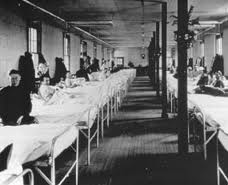
Just as war as shaped America, it is also heavily responsible for the development of plastic surgery as we know it today. While certain plastic surgery operations can be traced back thousands of years to Egypt and India, they were largely operations of the nose, ear or lip to correct congenital or traumatic injuries. It was not called plastic surgery then and such a term only first appeared in a rhinoplasty textbook in 1818. But it was war that created the need for extensive face and body reconstruction.


U.S. doctors returned from the war and brought these experiences with them, teaching a new generation of surgeons the exciting field of plastic surgery. This new surgical specialty interest resulted in the formation of the American Society of Plastic Surgeons in 1937 to provide a forum for exchange of ideas and establishing a formal training program for what constitutes a plastic surgeon. Plastic surgery was off and running and, although there have been five other major wars since, none has had the impact that World War I had.
On the surface, it may be hard to see how much of the cosmetic surgery done today has anything to with the reconstructive history of plastic surgery. But the connection is that every cosmetic procedure that I can think of had its beginning in a reconstructive operation. Cosmetic surgery is largely reconstructive procedures modified and refined to elective face and body changes.
War is tragic and most certainly hell for both soldier and civilians involved. But its one benefit is that it creates the need for reconstructive plastic surgery procedures from which the benefits affect both the present and many future generations as well.
Dr. Barry Eppley
Indianapolis, Indiana


